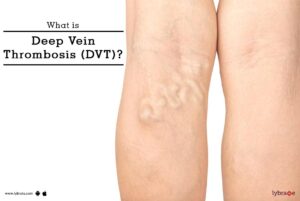Guest Blog: Deep Vein Thrombosis- A Threat To Life


Clotting or thrombosis is an important process and can happen in both the arteries and veins with varying implications. Thrombosis in the deep veins of the body leading to blockage of flow is termed deep vein thrombosis or DVT. This condition occurs more commonly in the lower limbs. Thrombus usually forms due to stasis or stillness in blood flow caused due to increased thickening of the blood or due to an injury to a blood vessel.
Deep vein thrombosis is more common after long flights, in smokers, during pregnancy, after complex surgeries, in patients suffering from cancer, in people who are confined to bed or are morbidly obese, or are on oral contraceptive pills. Rarely, a few people are predisposed to an increased risk of thrombosis due to some protein deficiencies.
Commenting on the incidence of DVT in India, Dr. Shubro Roy Chowdhury, Interventional Radiologist, RTIICS, Kolkata said, in severe cases, the swelling can increase to the point of endangering the health of the limb itself. The thrombus can also travel via the central veins into the lungs, causing a life-threatening condition, called pulmonary embolism. Furthermore, long-standing blockage of the veins can cause a post-thrombotic limb which can lead to chronic pain discomfort, and swelling and leads to poor quality of life.
Commenting on the treatment options available to patients with DVT, Dr. Shubro Roy said, once deep vein thrombosis is diagnosed, it needs to be treated urgently. Initial treatment consists of blood-thinning or anticoagulation with medications which can be done by injectables or by oral tablets.
Conventional oral tablets have certain problems with regard to interaction with food or for the need to check the degree of blood thinning by repeated blood tests.
A New Generation of blood-thinning tablets has been available for some time now with similar safety and efficacy which are more patient-friendly. However, it must be noted, that anticoagulant medications often do not actually dissolve the thrombus but rather prevents further propagation of the thrombus. In this setting, particularly in young patients, there is an emerging trend to actively treat the thrombus by either removing them with catheters (thrombectomy) or dissolving them with medications (thrombolysis). Even in this group, anticoagulation is recommended.
In some cases, where anticoagulation cannot be prescribed, and if the clot volume is large, occasionally an umbrella is inserted into the main vein to prevent the clot from going to the lungs and cause a near-fatal pulmonary embolism. This is called an IVC filter.
Due to the current COVID-19 pandemic, there has been a significant increase in reports of thrombosis in the veins and arteries. The precise cause of this is still unknown. In fact, this has been one of the leading causes of death in patients with COVID-19. Anticoagulation, therefore, has become a standard part of treatment during this pandemic, particularly in hospitalized patients.
Standard precautions against deep vein thrombosis would include regular exercise, reducing smoking, hydration, walking around when taking long flights or over long drives, wearing appropriate stockings in at-risk individuals, and judicious use of anticoagulation when affected by certain conditions at the advice of an expert.
